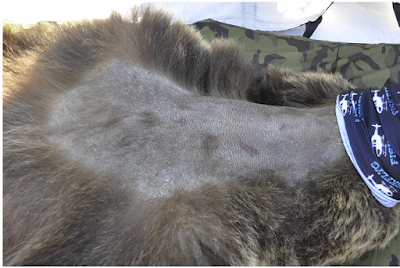 |
| Photo & histology of fish with parasites in the head, and cysts from body cavity Photo modified from Fig. 1. and Fig. 2. of the paper |
The galaxias used in this study were a subset of specimen collected as a part of a large study looking at the population genetics of these fish. Of the 66 sites where galaxias were collected, the parasite was found to be present in fish at five of those sites, though it was not particularly common, with only one to five infected fish out of each standard sample of thirty fish per site. It turns out that the parasite which were causing some fish to have bulgy heads was a parasitic fluke - Apatemon gracilis. Having a head filled with parasite cysts would probably compromise the fish's ability to survive, and the "white cap" of parasitised fish might be a big "eat me!" sign to potential predators - such as the parasite's final host which are known to be various species of fish-eating ducks.
At this point, it is uncertain if the presence of the flukes would change the fish's behaviour in a way that is meaningful for the parasite's life-cycle. While it may seem intuitive that the parasites on the brain are in control, that is not necessarily the case. Sure, some brain-encysting fluke have been documented to mess with their host's behaviours in a way that enhance their likelihood of ending up in the final host. But in others, timing of behavioural change onset indicates that behaviour changes are a side-effect of the parasite's growth, and by the time the parasite is ready to be eaten by a predator - just when you'd think it'll be helpful to have behavioural changes kick in - the fish has gone back to acting as it was before the infection.
We won't know exactly what A. gracilis does to its fish host without further investigation, but for now, at least the cause of the enlarged fish head has been resolved. The presence of parasites in these galaxias fish are not just a mere academic curiosity - both dwarf galaxias (Galaxiella pusilla) and the little galaxias (Galaxiella toourtkoourt) are threatened species of conservation concern, but we know next to nothing about their parasites. If certain population are more heavily infected with A. gracilis, then they might also be more readily affected by any environmental disturbance. Knowing what parasites might be lurking in the background can give us some ideas to what might tip the balance.
Reference:
Coleman, R. A., & Hoffmann, A. A. (2016). Digenean trematode cysts within the heads of threatened Galaxiella species (Teleostei: Galaxiidae) from south-eastern Australia. Australian Journal of Zoology 64: 285-291.


